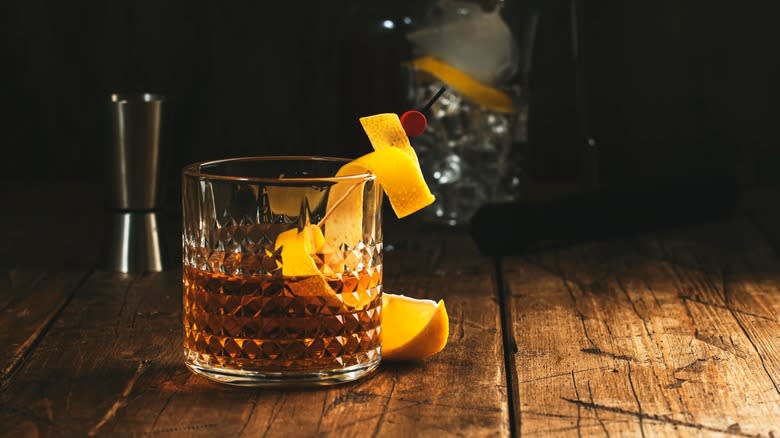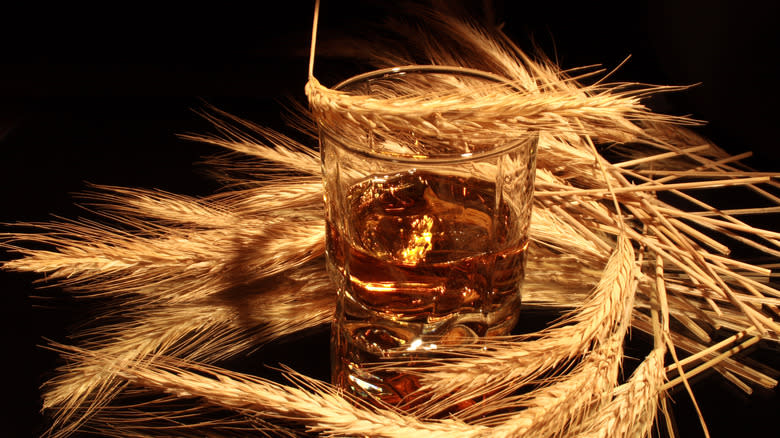The Waldorf Cocktail Is A Spin On The Manhattan With A Splash Of Absinthe

The Manhattan cocktail is such a classic, it almost seems cocktail heresy to mess with it. But that's exactly what an enterprising New York bartender of yesteryear did, thereby creating the now-resurgent spinoff Waldorf cocktail. Some would argue it deserves its own spotlight with no comparisons to its famous big brother. But the connection is inevitable if only for the fact that they're identical in nature save for a single ingredient.
A classic Manhattan cocktail cradles rye whiskey, sweet vermouth, and aromatic bitters, garnished with signature maraschino or candied cherries. The Waldorf keeps the same whiskey, vermouth, and bitters but adds the surprise of absinthe. That's a very distinct addition to the family, given the relatively strong taste of absinthe and its powerful punch to the tastebuds. The Waldorf hit the cocktail scene in the early 1900s at the original Waldorf hotel in New York City, carrying an equal amount of absinthe as the whiskey and vermouth. That's a big burst of herby anise and fennel flavors bringing a licorice taste to your glass.
Some diehard originalists adhere to the traditional formula, but fortunately, modern-day cocktail entrepreneurs are tempering the absinthe to something a bit more palatable. While still keeping that seductive tinge of absinthe, a craft cocktail creator by the name of Dale DeGroff reportedly came up with a new Waldorf cocktail standard. This version slightly dials down the sweet vermouth in relation to the whiskey -- and greatly reduces the absinthe to a mere rinse of the glass.
Read more: 23 Cocktails To Try If You Like Drinking Gin
Customize A Waldorf Cocktail Per Taste

As with any cocktail, the specific spirit you choose can greatly affect the taste, either adding to or decreasing things like spiciness, sweetness, nutty or earthy tones, and just an overall depth or complexity. There's no right or wrong to selecting the brand and proof of rye whiskey for making a Waldorf cocktail. It all depends on personal proclivities, but in general, a whiskey with a high rye content will make your Waldorf bolder and spicier. Smooth, aged rye whiskeys may carry rich, complex finishes with mixed hints of vanilla or honey in addition to the spiciness. Others will inject a Waldorf with notes of citrus, brown sugar, fruit, or cocoa.
Remember that absinthe is definitely not shy, so even when using a modern Waldorf recipe with only a slight touch of absinthe, you need a full-bodied whiskey that won't get overpowered by the licorice-like taste of anise. As for the sweet vermouth, keep in mind that it's different from a dry vermouth in that it's obviously much sweeter but also bolder and warmer, so it too will be vying for attention with the absinthe.
Finally, there's the garnish. Most every contemporary cocktail crafter will say to ditch the cherry, and instead go for a sophisticated little twist or curl of fresh lemon peel. There's enough in that Waldorf glass already without bombing the finale with maraschino or candied cherry flavor.
Read the original article on Tasting Table.

